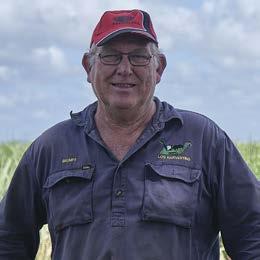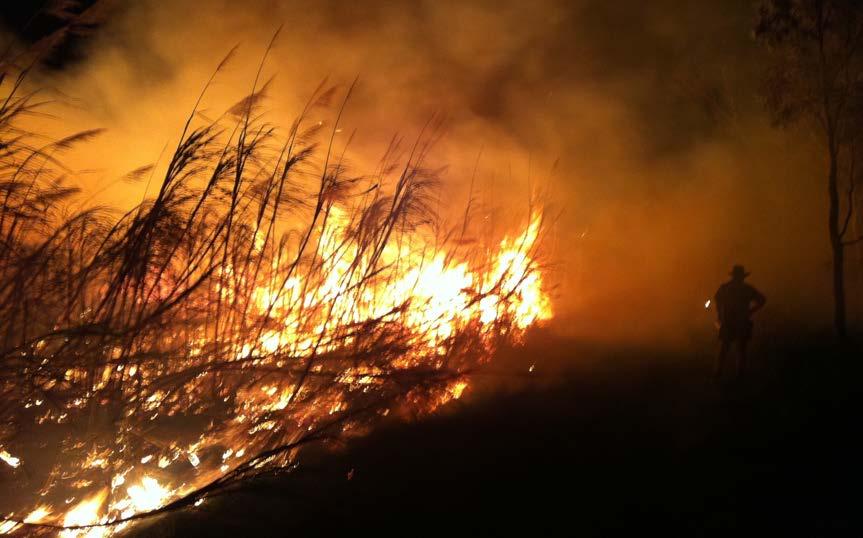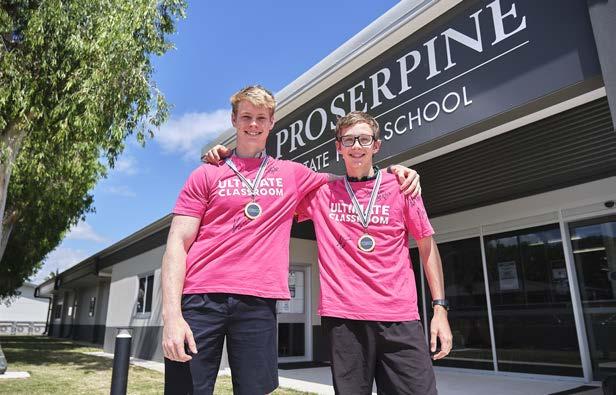
5 minute read
Proudly Proserpine 14
A Burning Issue
In the 2000s, the fields of Proserpine were lit in violent shades of amber and red, ablaze almost every night in the cool harvest winds. It’s rarer now to see sugarcane burning in the night; the old ritual is becoming an all but a forgotten art, especially in the Whitsundays, according to local farmers. But, for those outside the industry, the question remains: what happened to the hot nights when fire fled across the fields in sugarcane country?
Advertisement
Why Do We Burn?
Burnt sugarcane is far easier to cut, according to the Proserpine Historical Museum. “When I first came to this district, the locals always referred to the black fallout, [the ash] - from the fires as ‘black gold’,” a Proserpine Museum spokesperson said. “The burnt cane was a lot easier to cut and load; it’s as simple as that.” The history of preharvest burning dates to the 1940s when most sugarcane crop was “cut green” – a practice which saw residual ‘trash’ – green leaf matter that grows on the plant’s stalk – left on the plant during the harvest. Preharvest burns were uncommon in that time but may have been born during high infestations of rats which led to an exposure for labourers to leptospirosis, better known as Weil’s disease, a potentially fatal illness spread in rat urine. Burning the fields – mostly in areas close by to mills and with high rat populations – became vital to stopping the diseases rampage through labourers, who, at the time, were cutting by hand. When labour shortages arrived during World War Two, widespread use of pre-harvest burning to speed up harvesting came with it. Rising post-war labour costs saw burning become a standard for its ease, and it became even more popular when it was deemed to be extremely effective. The early mechanical harvesters in the 1960s were even initially designed to cut for this burnt system and were not well adapted to cutting green. According to Proserpine sugarcane farmer Tony Large, harvesters have improved, and green cutting has become the norm after experimentation in the ‘80s saw it an easier method after heavy rainfall. “The machines could only handle that burnt cane, not the biomass, and now they’ve made the machines that are capable of cutting green,” Mr Large said. “Back in the day, people weren’t cutting as much. The fields grew bigger and burning the cane was necessary; it was smarter to burn and produce faster.”
Sugarcane burning has slowly fazed out in the Whitsundays, and locals are asking why the iconic Queensland scene is a becoming a rarity
What Happens Next?
The tides have turned on the sugarcane burns, and tourists who visit Proserpine are lucky to witness one – but sometimes the tradition is still necessary. The Burdekin Region is one location in North Queensland that, despite the almost industry-wide change, continues to burn almost all its crop. A district with a high yielding one- or two-year crop, the Burdekin has largely avoided green-cane harvesting because of difficulties in cutting its fast-growing, thick produce which is well irrigated. But for Proserpine, it’s a different story: some years farmers must burn, but the problem is now finding the help they need. “Twenty years ago, you could get anyone to come with you for a burn; now that’s not the case,” Mr Large said. “The experience just isn’t there anymore in the young farmers. I’d say most blokes under 35, 40 have just the basic knowledge of it, but they don’t know how to make it work. “I have a neighbour who I burn with – I’ve been doing it with him for years – but one day that might stop. Those youngsters will have to learn.” An iconic Queensland image may just be disintegrating before the Whitsundays’ eyes.
Proserpine sugarcane farmer Tony Large said that burning sugarcane is rare, depending on the season

Ultimate Classmates
Two Proserpine students were crowned winners in a national television show that pitted them against some of Australia’s brightest youngsters. Using their brainpower, Proserpine State High School year 11 student Liam Stuchbree and year 12 student Mac Rogers teamed up to win the brandnew Channel 10 show ‘Ultimate Classroom’. The challenge-based series saw the boys compete in a STEM (science, technology, engineering, and mathematics) test like no other. Facing 15 other Australian students, they built replica bridges, deciphered codes, flew drones, and solved puzzles to come out on top. The pair kept their win a secret for three months after wrapping production and returning home to the Whitsundays. “We had so many people asking us how we went and we just couldn’t say a thing. They kept trying to get it out of me,” Mac Rogers said. “I think I convinced most of my friends that we did pretty badly. They were definitely surprised when they found out we won!” Much of the show was filmed at Amberley Air Force Base with Defence Force personnel dictating the challenges, as well as maths teacher and YouTube star Eddie Woo – including the finale which saw the contestants attempt to complete a Bedlam Cube. The solid dissection puzzle comprised of thirteen pieces has over 19 thousand distinct ways of being assembled into a cube. It took its creator almost two years to solve and acted as the shows final problem. Liam and Mac solved it alongside their fellow pink team member to clinch the overall win. “It was a lot of gambles that came together really well,” Liam Stuchbree said. “It was an awesome experience and to win as well was amazing. The highlights had to be going for a ride at the end in some of these huge Air Force planes and as winners we received a laptop each and GoPros.” The boys said, although there were some embarrassing moments watching the show back now, it was an incredible experience. “It was really surreal filming all day for the challenge and then doing these ten-minute recaps at the end of the day where you pretend you’re in the moment,” Mac said. “Watching it back, there were a few awkward parts we kind of wish they’d cut out, but it came together really well. Such a cool environment where we filmed in Screen Queensland Studios.” The boys were unsure if they’d be called back in the future for an All-Star season of Ultimate Classroom, but they can be happy knowing they would forever be the debut Ultimate Classmates.


Mac Rogers and Liam Stuchbree from Proserpine State High School won Channel 10’s Ultimate Classroom



